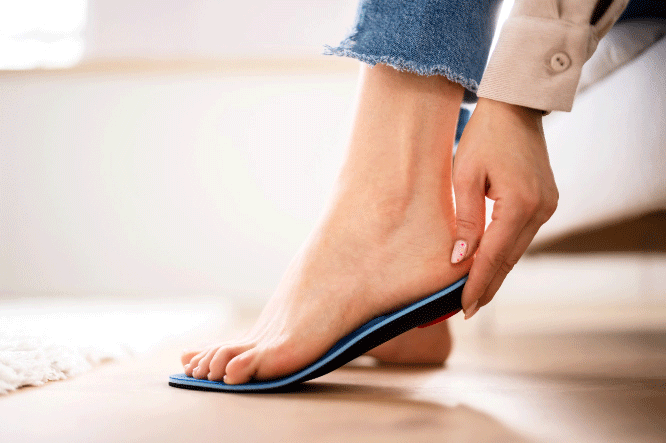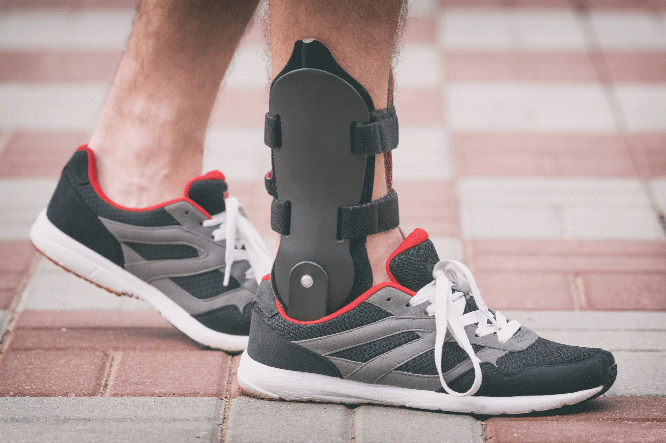At MyFootMedic, we understand the biomechanics of the human foot — a part of the body that’s more complicated than it seems. There are 26 bones in an adult foot, not to mention muscles, tendons, and ligaments. If you’re dealing with a foot injury, our podiatrists will get to the bottom of the issue.
We can provide biomechanical assessments to help determine the cause of your symptoms. Once we know what’s happening on the inside of your foot, we’ll get to work creating a recovery plan and discussing treatment options.
BIOMECHANICAL PODIATRY FOR FOOT PROBLEMS
Biomechanical podiatry, which take a comprehensive look at your lower limb function, can highlight numerous foot abnormalities, tissue damage, and structural problems. So we can work out which treatment or intervention will help. A biomechanical podiatrist can diagnose suspected issues, such as:
- Congenital Deformities
- Sports Injuries
- Plantar Fasciitis
- Achilles Tendonitis
- Overuse Injuries
Treatments
SPECIFIC EXERCISES
FOOTWEAR RECOMMENDATIONS
STEROID INJECTIONS
JOINT MANIPULATIONS
SOFT TISSUE MOBILISATIONS
PRESCRIPTION ORTHOTICS
SURGICAL CONSULTATION
ANKLE-FOOT ORTHOSES
Chat to our podiatrists about whether a biomechanical assessment could be used to diagnose your foot problem. Once our experts have a clear understanding of your foot or ankle issue, they will be able to recommend treatments like those above.
The best treatment option for you will depend on your exact issue and your medical history.
Biomechanical podiatry involves thorough evaluations involving bone and joint assessments and muscle, tendon, and ligament assessments. They also include a neurological examination, gait and posture analysis, and footwear assessment. You can be sure that your podiatrist is taking an in-depth look at your case, so you can take the most effective step forward with your treatment.
ORTHOTICS
Another helpful solution for foot and ankle problems is the use of orthotics. After an assessment, your biomechanical podiatrist may recommend them.
What are orthotics?
Orthotics, footbeds, and insoles can all be used to describe foot orthoses. These are prescription impressions inserted into shoes to help reduce the impact of biomechanical misalignment. Users find that orthoses reduce the stress on their soft tissue and shift their feet into a more comfortable position for walking and exercise. This usually helps reduce any foot pain or strain caused by their misalignment.
While you can buy ready-made orthoses in the shops, these won’t perfectly fit the structure of your foot. As a result, they’re unlikely to help you as much as they could. For the best results, it’s advisable to get custom insoles that are moulded from the exact shape of your foot.
Custom Orthoses
Our biomechanical podiatrists can create bespoke orthoses that are uniquely customised to perfectly support each individual’s needs. They can also be tailored to your shoes, which are likely to vary from pair to pair, too. This provides a more comfortable and effective fit for the wearer — who might then experience greater success with alleviating their foot pain.
WHICH CONDITIONS CAN ORTHOTICS IMPROVE?
As some foot complications are common, lots of people find they benefit from custom orthotics. Some specific conditions that are known to improve with orthotic therapy include:
- Plantar Fasciitis
- Lis Franc’s Injury
- Structural Leg Length
- Tendinopathy
- Hypermobility
- Shin Splints
- Sesamoiditis
- Metatarsalgia
- Mortons Neuroma
- Knee, Hip And Heel Pain
- Bunions
Orthoses for athletics
Sport is notorious for putting lots of stress and strain on the body, particularly the lower limbs. If sports players have existing foot issues, orthotics can help to increase comfort, prevent injuries, and improve performance.
If you’re an athlete, experience discomfort during exercise, or think you have a foot or ankle sports injury, get in touch with our team to discuss your treatment options.





